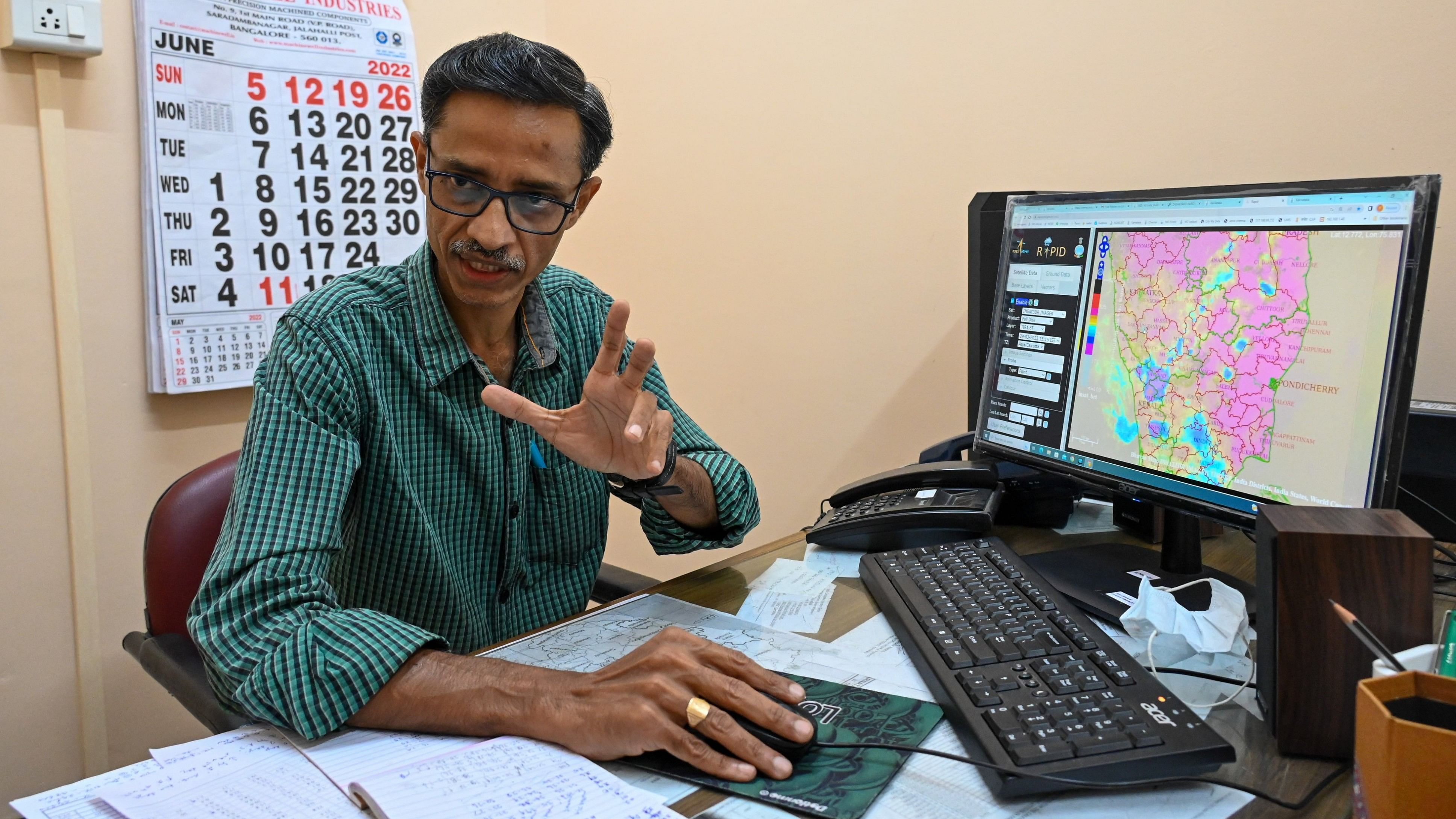
File photo of A Prasad, a senior scientist with IMD Bengaluru.
Credit: DH PHOTO/PUSHKAR V
The scorching summer has left many districts in Karnataka reeling under a heat wave. Predictions from the India Meteorological Department (IMD) suggest these conditions will persist into May with a short respite, thanks to the rains. A Prasad, a senior scientist with IMD Bengaluru, discussed the climatic conditions in the state, prediction challenges, and IMD Bengaluru’s journey with DH’s Sneha Ramesh. Excerpts
How long will the heatwave conditions in the state last?
Our initial predictions indicate Karnataka will experience a harsh summer, and we are seeing that on the ground now. The temperature will continue to remain one or two degrees above normal throughout April and May. The number of heatwave days will also be higher compared to the last few years. However, we are expecting close to average or a little less than average rainfall in April and May. The rains might bring down the temperature in the next few days.
Why is the state experiencing such intense heat? Do you see a pattern?
Globally, 2023 was declared the warmest year on record. Global phenomena such as the El Nino effect are having an impact on Karnataka and, as a result, the high temperatures. However, we cannot rule out local factors such as a drastic increase in population, rapid urbanisation, and an increase in emissions of greenhouse gases. As a result, Karnataka is also seeing the effects of climate change. However, we are not seeing any fixed pattern. This year, we are seeing high temperatures, but last summer, when El Nino had not set in, temperatures were not very high. In 2022, since it was a La Nina year, we saw relatively lower temperatures.
The state is also reeling under a drought owing to the poor rains last monsoon. What can we expect this monsoon?
We will be able to provide accurate predictions only by May. But, since the El Nino index is said to turn neutral by June, when monsoons begin, and the Indian Ocean Depolarization Factor, which is neutral now, will turn positive by June, this combination suggests favourable monsoons. However, we will be able to predict how good the monsoons will be only by May.
How has prediction accuracy improved over the years? What are the challenges to drawing accurate predictions for Karnataka?
Earlier, we used to plot data on a map and provide a subjective prediction for only two days. Now, we have moved to numerical weather prediction models, and IMD generates its own models. Using these models, we can provide objective location-based forecasts at district, taluk, and city levels. We will also use machine learning and automation. Radar, satellite images, and Automatic Weather Stations (AWS) have helped us further improve the accuracy. Forecasting skills have improved significantly, especially with respect to the prediction of cyclones and their intensity. As a result, we have been able to drastically reduce the number of deaths. During the Biparjoy cyclone, there were no deaths at all, and this is a shining example of the IMD’s accuracy. Speaking of challenges, we have to acknowledge that weather predictions for tropical areas are always challenging. Since southern India is close to the equator, weather vagaries are higher, and this makes the job tougher as compared to the northern parts, where we can see a set weather pattern. With technology and sophisticated tools, we are able to excel at predicting weather conditions in these areas as well.
Can you outline the history of IMD Bengaluru and upcoming technological advancements?
Established in 1867, IMD Bengaluru has a rich history. In November 1867, the Central Observatory for weather observation and forecasting was established at Bowring Hospital. Later, in 1894, the Mysore State Meteorological Department established observatories at Bengaluru, Mysuru, Hassan, and Chitradurga. In 1951, it came into the ambit of IMD.
Over the years, we have seen significant technological interventions that have helped improve our accuracy. To add to the feathers in the cap, Karnataka will soon get its first Doppler weather radar at Bengaluru, which will help us provide accurate short-term predictions. Now, we depend mostly on radars in Goa, Hyderabad, and Chennai, which have some limitations owing to the distance. Once we get a radar in Bengaluru, the forecast is going to get more specific and accurate.